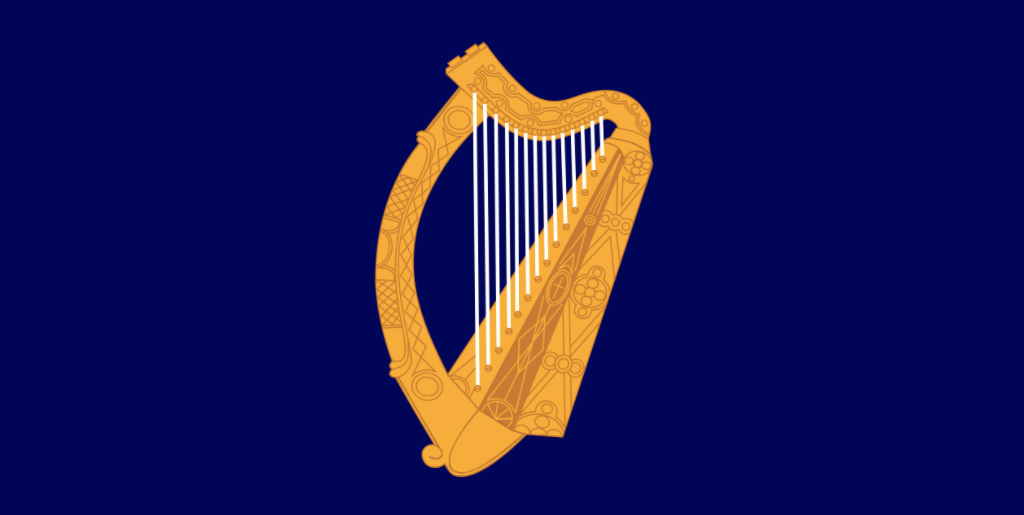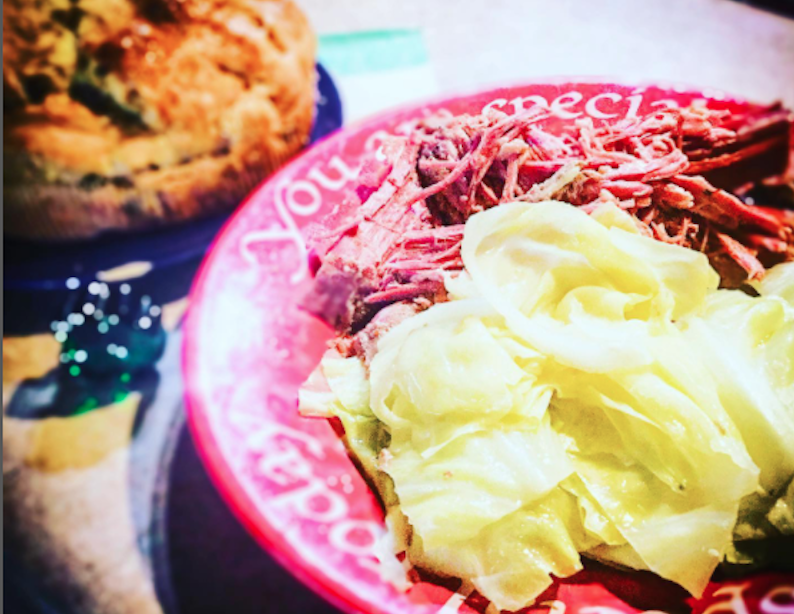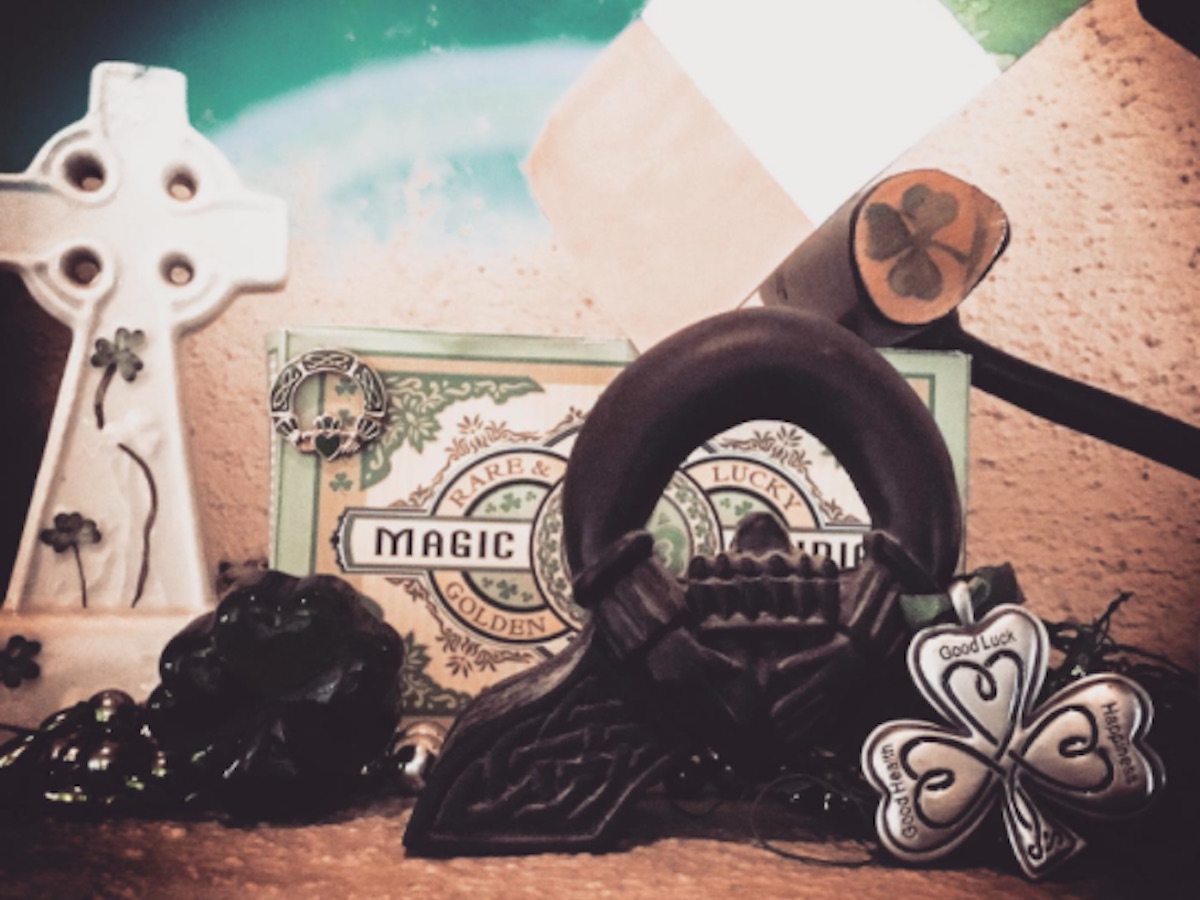St. Patrick’s Day is approaching, and our family always gears up to make it special.
We have our corned beef and colcannon makings (Irish mashed potatoes and cabbage) ready to for cooking, and our St. Patrick’s Day tree is shining bright.
What?! You don’t have a St. Patrick’s Day tree? Okay, maybe we’re the weird ones, here, but we do in fact have a little tree we keep on our mantel with some trappings of the season. There are the standard string of shamrocks and an Irish flag (my maternal grandma’s family immigrated from Donegal), but there are other cool things about St. Patrick’s Day celebrations that go beyond the shamrock, rainbows, and leprechauns.
Many people may know St. Patrick’s Day is the annual remembrance of the death day of the Patron Saint of Ireland, so here are five cool ways people celebrate that might be less familiar:
Wearin’ of the…Blue?
St. Patrick’s Day celebrations are popular in the United States thanks to Irish immigrants, but everyone who celebrates wants to wear the green. Today, green has been the symbol of Irish pride since 1641, and it was the color of the flag of the Great Irish Rebellion. Before that, however, when Henry the VIII claimed himself king in 1641, his flag was blue. The Irish Presidential flag is still blue, and the symbol on it, a harp, is just as much a symbol of Ireland as the shamrock. Bards were the biggest part of Gaelic entertainment. Of course, the Irish flag itself uses green for Irish nationalism and Catholicism. Orange is for the Order of Orange and Protestant minority, and white is for “lasting peace” between the two.

Multicultural Celebrations
Around the world, different cities have blended their own cultures with St. Patrick’s Day festivities to make their own, completely unique events. For example, the Caribbean Island of Montserrat celebrates its Irish culture with its African culture, as it also celebrates the slave rebellion. Part of the celebration is a calypso competition. One Japanese celebration, in Ise, flies the Japanese and Irish flags together during its St. Patrick’s Day parade, which starts at a Shinto Temple dedicated to the sun goddess. Tokyo also has some huge parades celebrating the day. Closer to Ireland, the Welsh city of Banwen used St. Patrick’s Day to celebrate his birth, as they claim the city is the birthplace of St. Patrick in 385 AD. Their parade ends at a stone marking what they say is his birthplace.
Here’s peek at the awesome parade in Harajuku, Tokyo:
The Corned Beef Melting Pot
People love cooking corned beef and cabbage on St. Patrick’s Day (my family included), but that practice is more American than traditionally Irish. According a history of the dish from Smithsonian Magazine, the Gaelic culture wasn’t that big on beef at all. Pork was the preference, and beef was more a British dish; in the 1600s more was brought to Ireland. “Corned Beef” was a reference to the big salt pieces used to preserve it. For a while, Irish corned beef was in big exports. There’s a long, complicated history with the Cattle Act and salt taxes, and wars in Europe that contributed to this, but let’s jump ahead to the Great Famine that brought many Irish immigrants to America. They were not making much money, but enough to buy meat…and they chose corned beef. The beef was almost exclusively brisket bought from Jewish butchers, and corned beef like the kind we enjoy today was kosher beef with potted cabbage and potatoes.
If you want to eat like they do in Ireland on St. Patrick’s Day, try lamb and bacon instead of corned beef.

Image: Lisa Tate
Running ‘o the Snakes
Legend has it that St. Patrick ran all the snakes out of Ireland. They apparently all went to San Francisco for a while. As San Francisco has always like to do things their own way, one local radio station hosted snake races every year from the mid-1960s to the late 1980s. The snakes had to make their way through a 16-foot-course in ten seconds, and the first year they used boa constrictors brought in from Florida. Eventually, it grew to a “bring-your-own-snake” event, and even organizations and clubs sponsored their own snake racers. By 1972, there were around 60 snakes competing.
St. Patrick’s World’s Records
Since the Guinness Book of World Records (originally Guinness Book of Records) started in the 1950s as a marketing tool for the Irish stout, Guinness, here’s a couple of world records for everyone:
- The World’s Largest St. Patrick’s Day Parade is in New York City, and often has more than 150,000 participants.
- The World’s Shortest St. Patrick’s Parade is in Hot Springs, Arkansas, as it takes place on the 98-foot-long Bridge Street, World’s Shortest Street in Everyday Use.
- The aforementioned Monserrat, where St. Patrick’s Day is an official national holiday, boasts the longest St. Patrick’s celebration. It lasts for 10 days.
St. Patrick’s Day, like many other observances that evolved from a certain region, culture, or historic event, gives people one more reason to put aside their troubles and celebrate something. Troubles are many in this world or ours, but we have only been given one life here on it. Find the time to do something fun, whether it is low-key dinner with your family or stepping out to a big public parade.
As one of the many, many Irish blessings goes:
“Remember to forget the things that made you sad.
Yet never forget the things that made you glad.”




